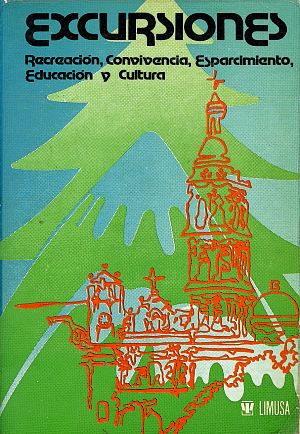Despite the popularity of geography in Mexico’s high schools, students are rarely involved in any geographic fieldwork until they reach university. The major exceptions are those students lucky enough to attend one of the international schools offering courses such as the International Baccalaureate (IB) Diploma Programme. The IB geography syllabus requires all students to have undertaken and written up a report on fieldwork. Most IB fieldwork is hypothesis-based.
It is perhaps not surprising therefore that the number of publications relating to fieldwork in Mexico is very small. There have been a limited number of specialist “field guides” published, relating to geology and geography, and coinciding with international conferences.
To the best of my knowledge, the first fieldwork guide aimed at high school students, teachers and the general public was written following a meeting of teachers in Mexico City in March 1979. Excursiones was designed to be a guide for “teachers, parents and/or organized groups interested in finding pleasant and educational ways of enjoying our environment and encouraging the spiritual elements inherent in making use of the tourist attractions that form part of Mexico’s heritage.”
The book, published by Editorial Limusa in 1983, has 14 general chapters (clothing, food, first aid, etc), followed by 17 destination specific chapters:

- Cacahuamilpa
- Taxco
- Zempoala
- Tepoztlán
- Desierto de los Leones
- Ruta de la Estrella
- Valle de Bravo
- Isla de los Aves-Ocotal
- El Xinantécatl and its lakes
- Piedras Encimadas
- Ruta de los Volcanes
- Africam Safari
- El Chico
- Basalt columns
- Tolantongo
- El Xitle and El Ajusco
- Chapingo-Texcoco
We’ll take a closer look at the opportunities offered for fieldwork in some of these locations in future posts.